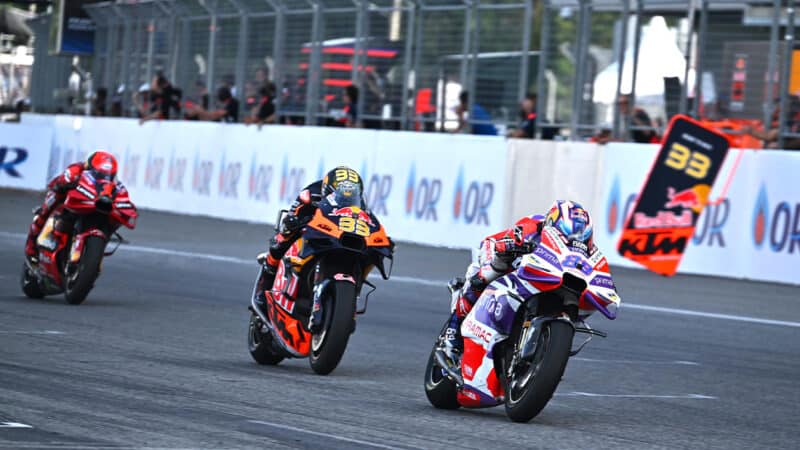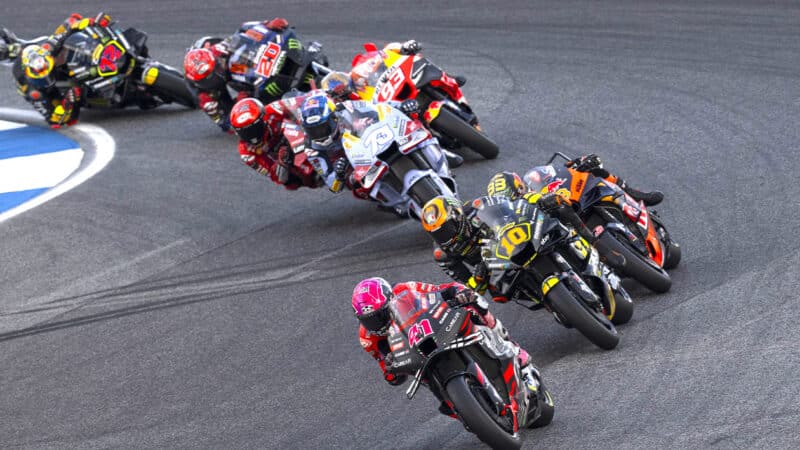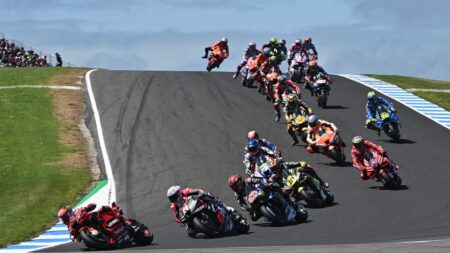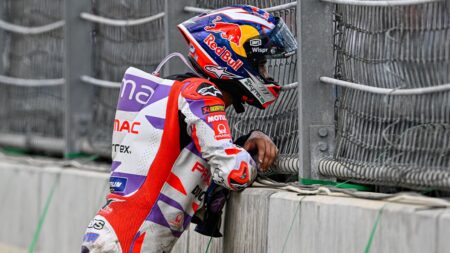To potentially decide motorcycling’s premier championship through crystal-ball gazing, guesswork and forces beyond the teams’ control is beyond ridiculous.
This is how the system currently works…
If a team guesses its rider will lead every lap or for some other reason will ride alone, it sets front-tyre pressure slightly higher, because the tyre will run in cooler air, so the team doesn’t want it to drop below 1.88.
If the team assumes its rider will be in the pack, it sets the pressure lower, because the heat from surrounding bikes may increase tyre temperature and pressure to the point where the tyre’s profile changes, drastically reducing grip.
If a team guesses wrong (and it’s literally only a guess!) its rider will either be under pressure and get penalised or over pressure and be forced to ease his pace or crash.
How mad is that?
Obviously it takes next to nothing to turn a team’s guesswork on its head, because motorcycle racing isn’t usually predictable. If a team’s soothsayer predicts its rider will bolt from the start, but he runs a bit wide through a corner or is hit by another rider, costing him positions and putting him in the pack, his front pressure may spiral out of control.
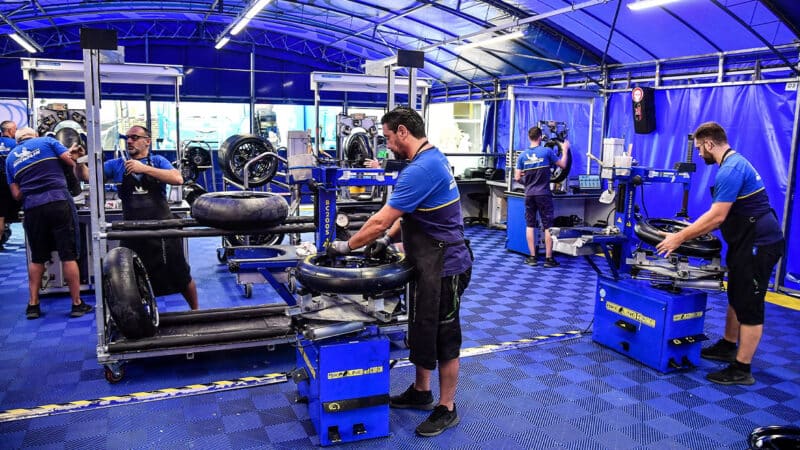
The Michelin tech area at a MotoGP round. The company has been MotoGP’s only tyre supplier since 2016
Michelin
Obviously hot races are the most complex, because keeping within that narrow window between too low and too high is even more difficult, which is why a fifth of the grid were under the legal limit in the recent Indonesian and Thai GPs. Sepang will be another scorcher, so Martin is in real danger of receiving a three-second penalty, the punishment for a second offence.
A MotoGP data analyst has examined recent races at this year’s final three venues (Sepang, 2018, 2019 and 2022; Losail, 2021, 2021 and 2022 and Valencia, 2020, 2021 and 2022) to understand the worst-case scenario if the Pramac Ducati rider does receive a sanction, always assuming he wins, with Bagnaia second.
At Sepang, Martin would lose nine points, while his factory Ducati rival will gain five. That’s a 14-point loss.
At Losail, Martin would lose 15 points, while Bagnaia would gain five. A 20-point loss.
At Valencia, it would be 12 points lost against five gained. A 17-point loss.
And all of this is in the lap of the racing gods.
Ironically, this so-called safety rule makes the racing less safe, because it forces riders to race with higher front pressures. For example, Bagnaia blames his crash during the red-hot Indian GP entirely on an over-pressure front tyre.
The full list of riders who have broken the new regulation since Red Bull Ring highlights the difficulties of racing in the tropics with this rule…
Catalan GP Maverick Viñales
San Marino GP Dani Pedrosa
Indonesian GP Marco Bezzecchi, Aleix Espargaró, Raúl Fernández and Franco Morbidelli
Thai GP Espargaró (second offence, three-second penalty), Pol Espargaró, Marc Márquez and Martin.
To compound the threat to MotoGP’s reputation, these penalties are announced an hour or so after a race, because MotoGP’s technical staff need to check and recheck the TPMS (tyre pressure monitoring system) data.
Thus penalties are delivered after the podium celebrations and TV interviews, around the time that the post-race media conference begins. Imagine the scenes.
Of course, time delays affect all technical infringements, but those other rules aren’t broken through the inability to see into the future.
Why is front tyre pressure such a problem now? Because while Michelin’s front slick was up to the job a few years ago it is no longer up to the job, because it’s been overwhelmed by the huge technical changes that have transformed MotoGP in recent seasons.
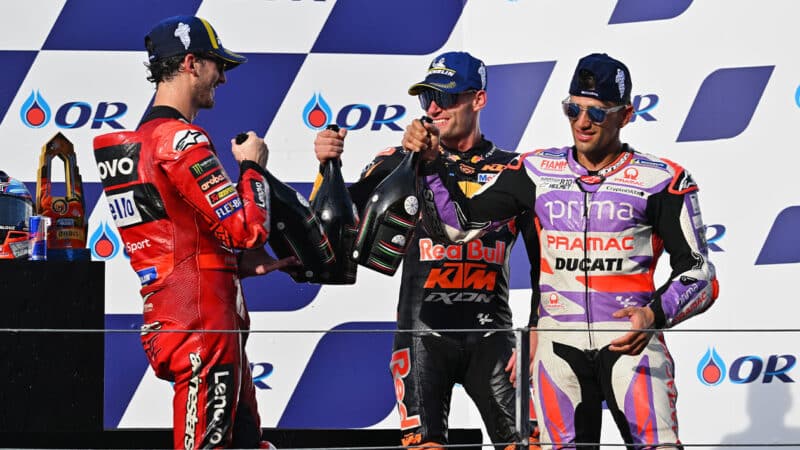
It’s hard to imagine a worse scenario than a rider’s victory being taken away an hour after the race because his team couldn’t see into the future
Michelin
Some say Michelin needs to improve its front tyre, which is true. (A new tyre is on the way, designed to be less sensitive to pressure changes, hopefully for 2025.)
But the concept of a spec tyre series is that manufacturers build their motorcycles to get the best out of the spec tyres, so if their engineers are causing problems for the tyres – by adding downforce aero and ride-height devices – they’re not playing the game. Thus the manufacturers – some more than others – as well as Michelin and Dorna (who should have seen this situation coming and done something about it) are all to blame.
Why does the rule even exist?

